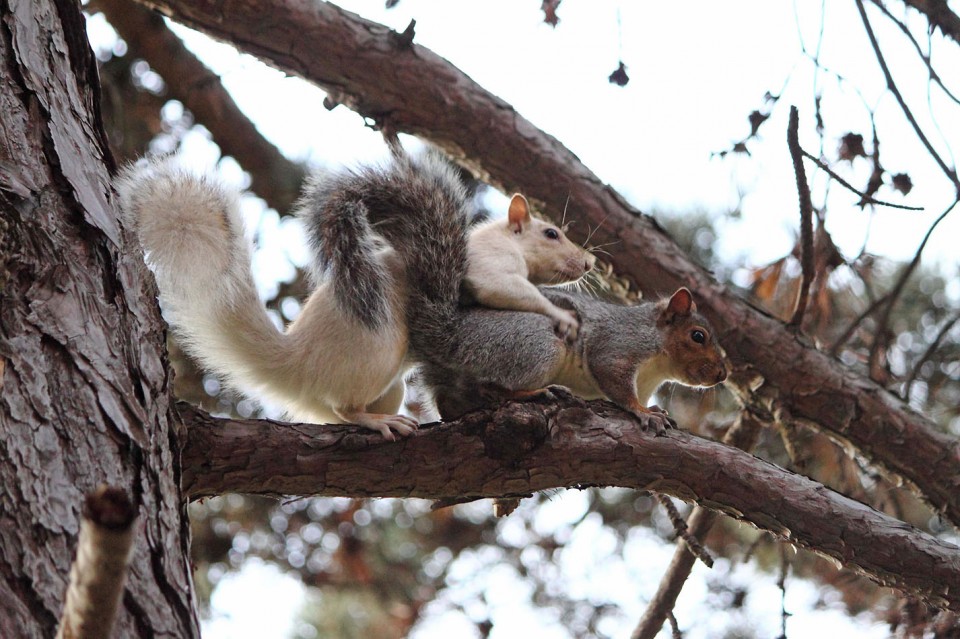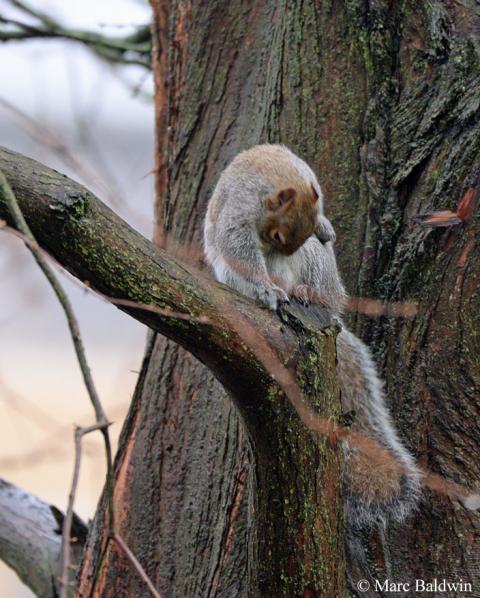Squirrel Breeding Biology - Mating & Copulatory Plugs
Returning to Laidler's description, he goes on to describe how, during the mating chase, the female may enter a tree hole which the dominant male in her band of pursuers will often defend from the other males and may try to enter, or she may stop and face the male on a branch; he hesitantly approaches her, calling softly in a manner not dissimilar to a squirrel kitten. At this point advances are often once again rebuffed and the female may jump over the male and continue the chase but, Laidler notes, at some point:
“She suddenly stops running and assumes the mating posture, usually on the vertical section of the tree. The first male to reach the female is then allowed to mount immediately. Normally she clings to the bark with her forepaws, allowing the male to move the lower part of her body during copulation. In some cases the male may grasp the female's waist and pull her body backwards and upwards, in others her hindpaws rest fully under her rump in a non-extended position, but in either event her tail is held to the side.”

Despite several males involved in the pursuit, each chase will typically end in only a single copulation event, lasting about 30 seconds. Once ejaculation has occurred the male disengages and the female grooms her genitals. Both Red and Grey males leave behind a small copulatory plug in the female’s vagina that Bosch and Lurz describe, in The Eurasian Red Squirrel, as:
“moist, opaque, creamy white and rubbery and are produced from coagulation of male semen, including secretions from the seminal vesicles, prostrate and Cowper’s glands”.

Some plugs remain in place for several hours, but many are removed by the female within the first 30 seconds after mating. Indeed, while studying Greys on the University of Kansas’ campus between 1988 and 1990, John Koprowski observed that seven of the eight female Greys he watched removed at least one plug during their mating bouts over the two years. Interestingly, Koprowski noted that if the female was going to remove the plug she invariably did so in that first 30 seconds, otherwise she seemed to leave it in place and one animal was caught with the plug in situ more than 2.5 hours after mating.
What happens to these plugs, whether they fall out of their own accord, dissolve or are dislodged by subsequent urination isn’t known. If the plug was removed, Koprowski recorded that it was eaten by the female in just over 60% of cases and discarded in the rest. Based on five plugs that Koprowski was able to examine, they averaged 16mm (0.6 in.) long by 9mm (0.4 in.) wide and were 8.5mm (0.3 in.) thick; they weighed about 0.75g (1/38 oz.).
There is no pair-bonding among squirrels and males only seem to show interest in females as they approach oestrus, the sexes consorting for only a few hours during the breeding season before parting after mating.